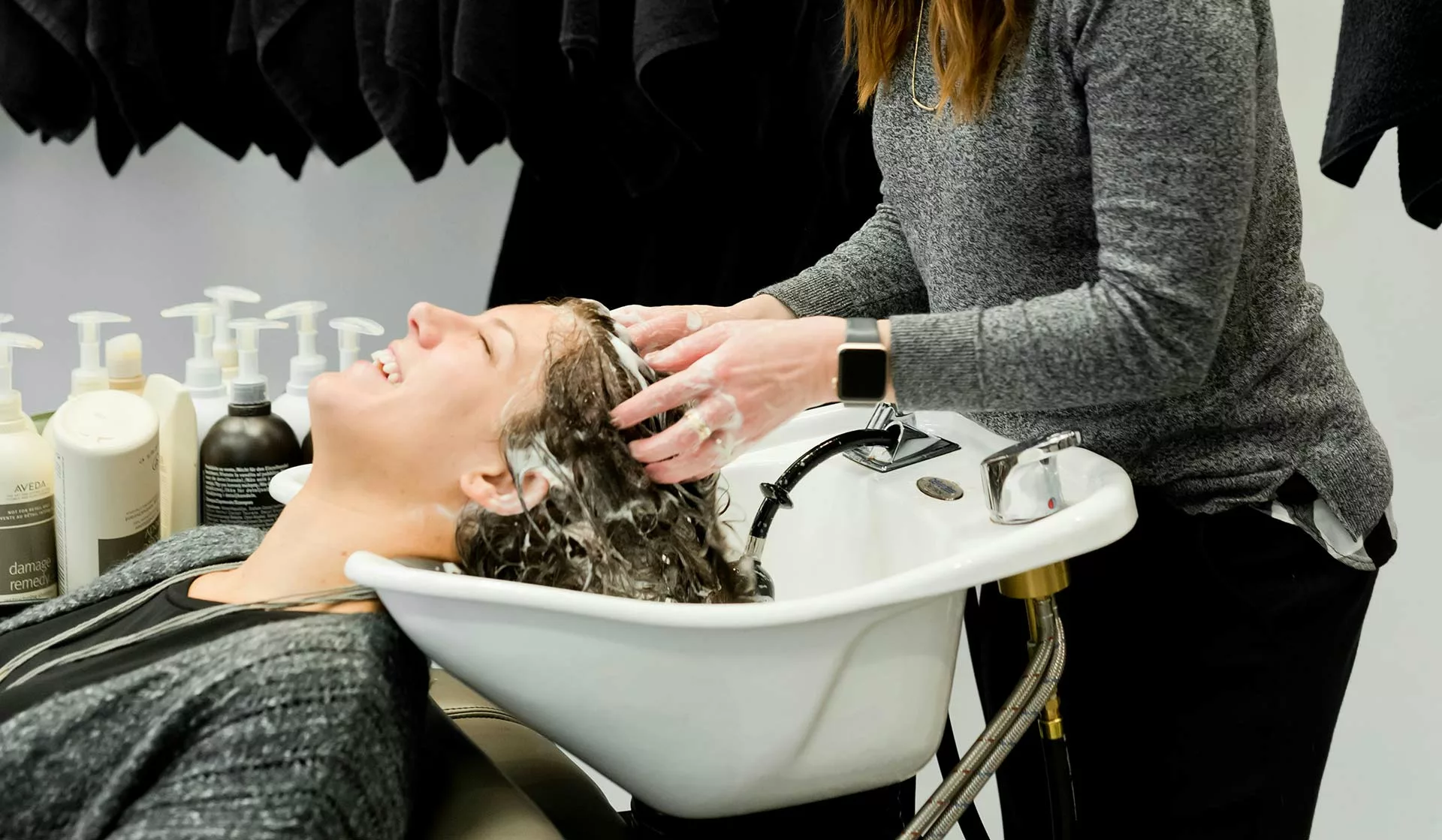Temperature Matters:
Warm water is the first step in loosening up oil, dirt, and product buildup on your hair. Evenly distributed water is vital for getting a nice, rich lather because it helps dilute the shampoo to spread it throughout the scalp. Most professional shampoos are concentrated so remember… less is more. Using warm water also helps open the cuticle, therefore achieving the best results.
Shampoo Application:
Use a dime- to quarter-sized amount of shampoo depending on your hair’s density. Since oil is produced at the scalp, start at the hairline, then gently work it down towards the nape, only doing this at the root or scalp area.
Scrub Your Scalp Only:
A vigorous scrub is great for scalp stimulation, working up a good lather, and loosening up debris, but it can be too much for the rest of the hair. You don’t want to rough up the cuticle, so try to gently “massage” the shampoo in. If products are used on the hair, they’ll be removed when the suds run down without additional friction. A silicone scalp brush can also help get deep down at the root to stimulate blood flow.
Rinse and Repeat (as needed):
If it’s been a while since you last shampooed your hair, the first application might not be as effective due to the oil build-up. A good indicator that it’s still dirty is if it doesn’t lather well. If you typically shampoo 1-2x a week, it’s more effective to use a special clarifying shampoo for the first wash, and then use your luxury shampoo for the second.
Rinse Thoroughly:
The conditioner won’t be as effective if you have residual shampoo which coats the hair and will counterbalance the process. Rinse thoroughly for at least three minutes, focusing on the back of the head and nape, making sure everything is gone. Parting the hair and targeting the water directly to the scalp will help to remove any leftover shampoo.
Conditioner Application:
No matter the hair type or texture, applying conditioner to your ends only is ideal. Conditioners provide moisture by using oils so avoiding the scalp area will reduce the chances of unnecessary build-up. I suggest keeping the conditioner between 4-8” away from the scalp to avoid this issue. Once applied, use your fingers or a wide-tooth comb to move the product evenly throughout the hair to help properly distribute and remove tangles.
Cool Water:
We all prefer warm water, but it’s recommended to dial down the temperature because rinsing with cool water helps lock in nutrients by sealing down the cuticle. This creates a shiny, smooth finish and helps lock in color. It may not be the most appealing, but your hair will thank you in the end.
Aftercare:
Hair is the most fragile while it’s wet which makes it more susceptible to breakage if not treated properly. Sleeping with wet hair makes it more vulnerable to breakage due to the hair’s friction against the pillowcase from tossing and turning. Removing moisture will help avoid the damage that results in frizz and those gnarly baby hairs that stick up like antennas! Some anti-breakage preventions include using a silk/satin pillowcase, silk/satin nightcap, using non-pulling hair ties, and avoiding tight hairstyles.



